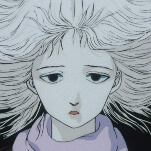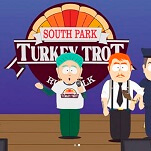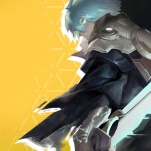Fairies dancing on the screen: 4 classic video game sprites, reviewed

1. Jumping Mega Man (Mega Man, 1987)
When Mega Man jumps, he jumps for joy. His arms splay out at 10 and 2 o’clock, he emits a shout, and his legs flail. Or so I imagine. Mega Man’s leap is just one frame of animation (two if you happen to fire a shot in midair), but as it traces across the screen in a high arc, triggered by your button press, that single frame carries an outsized exuberance. The end of each stage in a Mega Man game has a gate that opens into the boss chamber; it has become tradition to jump through that door, freezing the hero in his “Let’s go!” pose as the final battle comes into view.
In video game graphics, “sprite” is the technical term for a 2-D object that can move around the screen independently of its background. It’s the digital equivalent to the traditional animation practice of laying transparent cels over scenery. (Computers are as lazy as people: They would rather not redraw the whole scene for every frame.) The image of Mega Man jumping is one “sprite”; he also has sprites for running, shooting, and so on. By moving and rapidly swapping out these various sprites, games create the illusion of a continuously animated character.
We take it for granted now, but in the mid-’70s, it was a technological challenge to make a computer track and render the movement of small visual objects without recalculating the whole image in memory. Texas Instruments was among the first chip fabricators to figure it out, and when T.I. technicians needed a word to describe the little pictures that were given life by their TMS9918 Video Display Controller, they coined the term “sprites.” Engineers can be poets.
Like the fairies that are their namesake, video game sprites exist between the corporeal and non-corporeal realm. In one sense, they’re cartoon characters. Mega Man’s look of childlike excitement even has its roots in Astro Boy, the manga and anime icon that Mega Man designer Keiji Inafune used as an inspiration. But for the player, watching Mega Man jump is a different experience from watching Astro Boy jump, for the simple reason that Mega Man leaps only when you tell him to do so. He’s not merely the object of your gaze. He’s a surrogate body, an avatar of your intentions. So when he takes to the air, it feels a bit like you are, too.
2. Jumping and whipping Simon Belmont (Castlevania, 1987)
But not all jumps are equal. Mega Man has limbs jutting out at every angle, but Simon Belmont, the hero of Castlevania, scrunches into a comically tight ball when he’s in the air. (There’s a practical reason for this: Simon’s “jump” sprite also serves as his “kneel” sprite.) He’s practically a projectile, and that’s fitting. While Mega Man can change direction in the middle of a jump, Simon can’t—he has too much respect for the laws of physics.
That tightened ball hints at a coming explosion of energy, because while Simon may not be able change his mind halfway through a leap, he can at least attack as he elevates. He most often strikes with his main weapon, the whip, and Simon’s whipping sprite (seen above—it’s the same whether he’s on the ground or in midair) is a masterpiece of economical pixel art. Even with the chunky building blocks of NES graphics, you can see the twist of the torso and the rearing back of his arm. While the legs have dropped down from the initial jumping position, the image is still taut with potential energy, which is unleashed over the ensuing split second as Simon turns…
…and strikes:
Castlevania and Mega Man are superficially similar games—side-scrolling platformers in which a hero fights a stream of enemies that emerge from offscreen. Yet they have distinct rhythms, a difference hinted at in their sprites. In Mega Man, you fire a pellet gun with ammunition that travels all the way across the screen. So the game’s outgoing portrayal of your character invites you to constantly send energy outward, because if you can damage a foe from a distance, you’re that much safer.







































